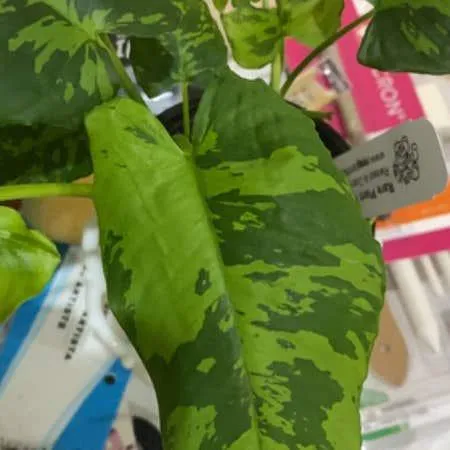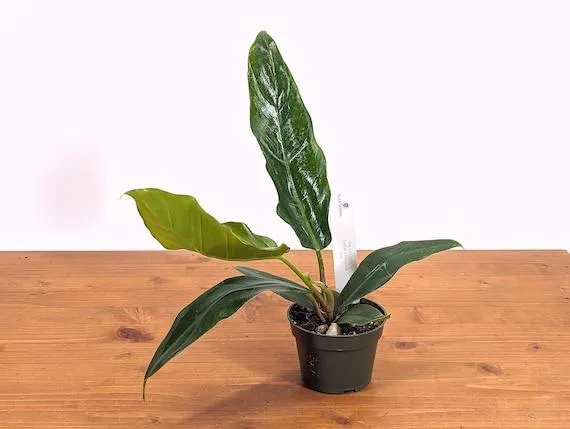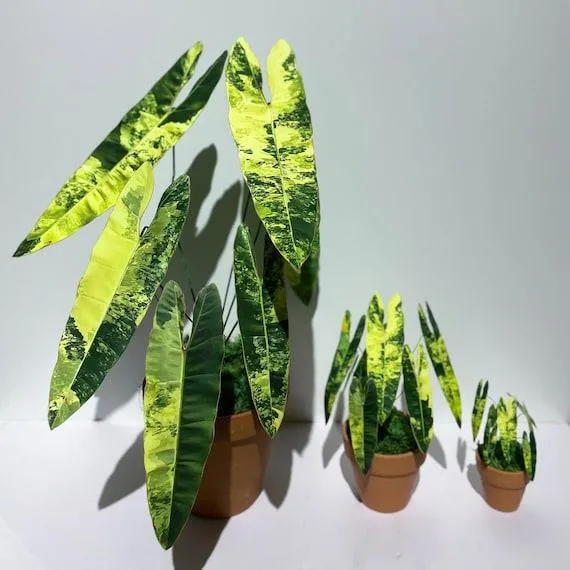Why is the Variegated Philodendron Billietiae so Darn Expensive?
If you’re an avid houseplant collector like myself, you’ve probably heard whispers about the legendary variegated philodendron billietiae and its eye-watering price tag. This stunning plant can fetch upwards of $500 for a single vine cutting! As someone who loves hunting for plant bargains, I was determined to find out what makes this philodendron worth its weight in gold. Here are the top reasons why the variegated billietiae commands such a high price in the houseplant world:
Its Rarity
The first thing to understand is just how rare this plant is in cultivation. The variegated billietiae was only discovered in its natural habitat of Thailand in the 1990s. Since then, very few cuttings have made it out of Southeast Asia and into the global houseplant trade. From my experiences trading cuttings with other collectors, I’d estimate there are fewer than 1000 individual variegated billietiae plants in the world. Basic economics tells us that when demand is high and supply is low, prices WILL be high. With its rarity, the billietiae definitely falls into this category.
Its Temperamental Nature
Not only is this plant incredibly rare, but it can also be downright diva-like to care for. I once knew an experienced collector who struggled for over a year to get a single billietiae vine to put out new growth. Its preferences for humidity, temperature, light and water seem incredibly finicky. One small change can cause a vine to go downhill fast. This means that for a nursery or collector to successfully propagate more cuttings is no easy feat. The level of expertise, time and resources required directly contributes to the high cost. With other, hardier houseplants readily available, most people aren’t willing to take on the risk that comes with caring for such a temperamental plant.
The Joy of Owning a Unicorn Plant
If I’m being honest, part of the billietiae’s high cost is simply fueled by plant collector bragging rights. When a plant is as rare and unique-looking as this one, wouldn’t you pay a pretty penny just to say you have it in your collection? There’s an undeniable thrill that comes from tracking down and successfully growing a “unicorn plant” like the variegated billietiae. For serious collectors, the prestige of owning a coveted plant like this may very well be worth the investment. It’s kind of the plant equivalent of a status symbol! You’ve truly made it as a collector when this beauty has a spot in your home.
Scarcity Increases Demand and Value
Basic economics also tells us that when demand for a product increases but supply remains limited, the value of that product goes up. As houseplant popularity surges, more people want in on the thrill of collecting rare plants. Yet the availability of a plant like the variegated billietiae has barely increased since its discovery. If anything, climate change and habitat loss could threaten its scarcity even further in the future. With demand high but scarcity also increasing long-term, prices will unlikely drop anytime soon for this elusive beauty. Therefore, in a purely economic sense, the billietiae has proven itself a sound long-term investment for collectors and nurseries alike.

It’s Simply Gorgeous
Of course, none of these reasons fully capture just why someone would pay top dollar for this plant. When you see a healthy, well-established variegated billietiae vine in person, you truly understand. Its broad, heart-shaped leaves emerge bright green with intricate lacy patterns of white marbling. Some leaves reveal flashes of pink adding an extra dimension of color. As it climbs, the vines take on an ethereal, fairy-like appearance. It’s a plant beauty that simply must be seen to be believed. For collectors who value striking foliage and aesthetics above all else, no price is too high for such a stunning addition to their home. You could argue its high cost is almost justified for the unique beauty it brings.
Longevity and Heirloom Potential
- When cared for properly, a variegated billietiae vine can live for many decades, continually putting out new growth.
- Some of the oldest variegated billietiae plants date back to the mid-1990s. That’s over 25 years of gorgeous foliage!
- As the plant matures, its vines grow longer and more full, becoming even more breathtaking with age.
- With proper division and propagation, a single billietiae plant could be passed down through generations, becoming a horticultural heirloom.
- For serious collectors and plant families, the long lifespan and ability to preserve the lineage makes owning a variegated billietiae very meaningful.
In my experience trading with collectors, a well-established 30-year-old billietiae is considered peak value since it’s a living piece of horticultural history at that point. Its resilience and longevity give collectors peace of mind that their investment will continue appreciating for decades to come.
Skill Level Required for Care
While the variegated billietiae is certainly not the easiest houseplant to care for due to its specific requirements, owning and thriving such a rare plant does require a high level of horticultural knowledge and skill. As I mentioned before, keeping this plant potted up takes a real green thumb capable of identifying problems fast and solving them with precision adjustments. Sure, paying top dollar means you don’t have to learn those hard lessons yourself through trial and error but you’re also buying into a commitment to providing excellent long-term care.
In a sense, the high cost of entry establishes an expectation that the new owner possesses the experience to handle such a finicky plant properly. Those without confidence in their abilities are less likely to shell out large sums of cash. So by charging a premium, nurseries and collectors can feel more at ease knowing their valuable plant is going to a qualified home where it will thrive for many years to come.
Expert Propagation Required
No discussion of variegated philodendron pricing would be complete without talking about propagation challenges. In my experience both as a collector and former nursery worker, propagating a plant like the billietiae from a single vine into a full, multipronged plant suitable for sale takes a true artisan level of horticultural skill and experience. Factors like humidity, lighting, potting medium, watering and division timing must be meticulously managed over many months.

A single mistake could cause a cutting to stall out or the variegation to revert. For nurseries taking the risk of properly propagating valuable cuttings, prices on parent plants must be high enough to justify those costs involved as well as have room for potential losses during propagation. To the savvy collector, purchasing a more mature, well-established specimen saves them a huge headache and risk of failure in their own propagation attempts later down the line.
Simple Supply and Demand Dynamics
When you really break it down, the high cost of very rare and difficult variegated plants like the billietiae comes down to ordinary supply and demand principles. Low availability paired with huge consumer interest means prices will naturally be high according to basic market mechanics.
While it may seem absurd to pay hundreds for a single vine cutting, those who have laid eyes on a truly striking specimen up close understand the allure. To the intelligent collector, such a gorgeous long-living plant can offer decades of joy and become an prized family heirloom, making an initially steep cost seem paltry over the long run. With continuing barriers to rapidly expanding supply anytime soon, don’t expect variegated philodendron billietiae prices to come back down to earth anytime soon.
In the end, rarity, beauty, botany, horticulture and a dash of prestige come together to give this singular plant its jaw-dropping price tag. Whether it’s worth it or not depends on the individual collector’s passion and budget but hopefully this overview sheds some light on what creates the billietiae’s mystique in this insane houseplant market we all love!
Why Variegated Philodendron Billietiae is so Expensive
| Rarity | Cultivating stable variegation is difficult, making variegated forms quite rare. |
|---|---|
| Growth Rate | Variegated billietiae grows slowly, taking time to mature and produce full, variegated leaves. |
| Demand | Houseplant popularity increases demand for rare, distinctive varieties like variegated philodendrons. |
| Propagation Challenge | While cuttings can be taken, propagating the variegation pattern intact is not guaranteed, limiting supply. |
| Size at Maturity | A mature variegated billietiae plant with an established variegation pattern can be 3-4 feet tall, adding to its appeal. |
FAQ
-
Why is the variegated philodendron billietiae so expensive?
The variegated philodendron billietiae is costly because it grows relatively slowly in comparison to other houseplants. It also doesn’t propagate effortlessly through cuttings like some other types of philodendrons. At the same time, it’s a desirable houseplant due to its eye-catching variegated leaves. So the combination of slow growth and high demand makes it pricey.

-
Is it worth the high price tag?
For some plant enthusiasts, the variegated philodendron billietiae is absolutely worth splurging on. Its cream and green leaves create a stunning visual impact in any room. However, you’ll need plenty of patience, a green thumb, and deep pockets to keep one thriving. Perhaps it’s best to start with an easier houseplant before tackling this beauty.
-
Why does it grow slowly?
The variegated billietiae seems to divert a lot of energy into producing its fancy leaves rather than growing quickly. It also appears the plant may be a bit finicky about light and moisture levels. Getting the right conditions can definitely boost growth, yet perfection is challenging. In general, it just tends to increase in size more gradually than certain other philodendrons.
-
Do cuttings usually root successfully?
Sadly, propagating the variegated philodendron billietiae through cuttings is kinda tough. A lot depends on the cutting’s size and how well you care for it while it tries forming roots. Sometimes cuttings will root, yet the new plant may lose its variegation over time. Basically, rooted cuttings are no guarantee compared to purchasing a full-grown specimen. The plant needs to feel comfortable putting out new growth.
-
Where can you buy one if interested?
If you really want a variegated billietiae, your pretty much have to buy one online or from a specialty plant store. Etsy often has small, immature plants available. Nevertheless, be prepared to pay big bucks, like several hundred dollars minimum. Maybe check your local botanical garden too in case they sell rare plants occasionally. It’s a stunning plant, but that high price is no joke!
-
In summary, why so expensive?
To wrap things up, the main reasons the variegated philodendron billietiae commands such a hefty price are its sluggish growth rate compared to other philodendrons, the challenges of propagating it through cuttings, and possibly its delicate nature requiring precise care. Yet for serious plant collectors, its ultra-rare quality and lovely leaves might make it worth splurging on – if you can find one available!

